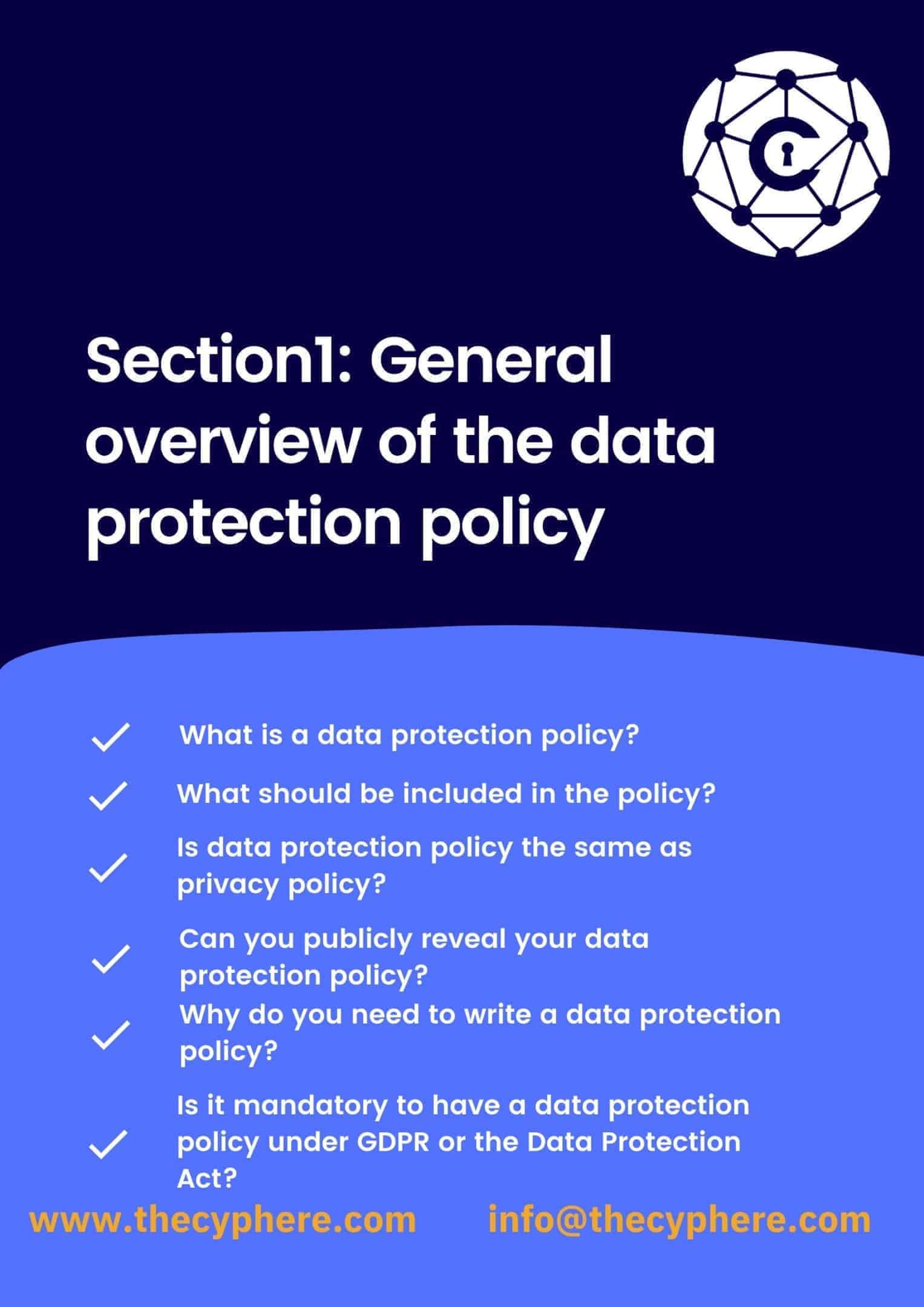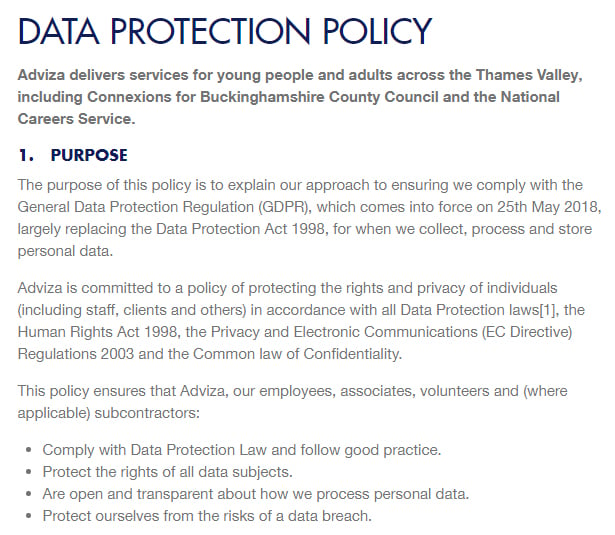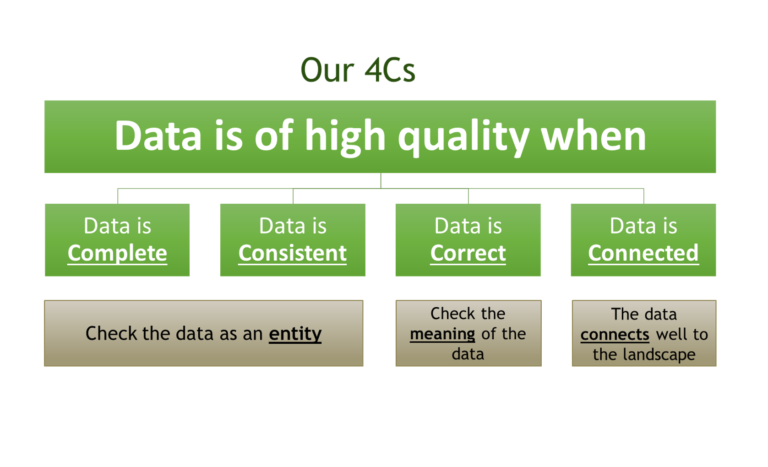What Is A Data Protection Policy?
A Data Protection Policy is a set of rules that an organization or business must follow to ensure that individuals’ personal data is kept safe and secure. This policy outlines the steps the organization must take to protect the data it holds, such as collecting, storing, and processing personal information, as well as how it should be used and disposed of. It also specifies the rights of individuals whose data is held, and the obligations of the organization or business to protect it. By following a Data Protection Policy, companies can ensure that they remain compliant with data protection legislation, such as the GDPR.
Definition of a Data Protection Policy
A Data Protection Policy is a document that outlines how a company collects, stores, and manages sensitive data about its customers. It is designed to protect customer data from unauthorized access, use, or disclosure, and to ensure that customers’ privacy is respected and maintained. The policy should include provisions for data security, encryption, data retention, and other security measures. Additionally, it should identify the roles and responsibilities of those involved in the data protection process, such as system administrators, data custodians, and data processors. Finally, the policy should also include a procedure for responding to data security breaches and reporting any data protection violations.
Benefits of Having a Data Protection Policy
Having a data protection policy in place is essential for any business. It helps ensure the security of your customers’ data, while also protecting your company from potential legal issues. A data protection policy outlines the measures that your company is taking to protect the data of its customers. It outlines the steps that your company will take to ensure customer data is kept secure and confidential. Additionally, the policy outlines what type of data is being collected, how it is being used, and who is responsible for maintaining the security of the data. By having a data protection policy, your business can demonstrate that it takes data security seriously and is committed to protecting its customers’ data. This helps to build trust and credibility with customers. Ultimately, having a data protection policy helps to ensure your business remains compliant with data protection laws and regulations, while also providing customers with peace of mind that their data is secure.
Elements of a Data Protection Policy
Data protection policies provide essential guidelines and parameters to ensure the security and privacy of data. A comprehensive and effective data protection policy should contain the following elements:
1. Purpose: A clear statement of the organization’s commitment to protecting the data it collects and processes.
2. Scope: A description of the types of data that are subject to the policy and the individuals and organizations that it applies to.
3. Data Collection and Use: Guidelines for collecting, using, storing, and sharing data, including information on how to obtain consent from data subjects.
4. Data Security: Measures for protecting data from unauthorized access, disclosure, alteration, or destruction.
5. Data Retention: A description of how long data is stored and how it is disposed of when it is no longer needed.
6. Rights of Data Subjects: Information on how data subjects can exercise their rights, such as the right to access, correct, or delete their data.
7. Monitoring and Enforcement: A description of the measures used to ensure compliance with the policy.
Data protection policies provide the framework and guidance for organizations to ensure the secure and responsible handling of data. By implementing such policies, organizations can protect their data and ensure the privacy of their customers.

How to Create a Data Protection Policy
Creating a data protection policy is an important part of protecting your business, customers, and employees. A data protection policy outlines the legal requirements for collecting, storing, using, and protecting personal data. It also serves as a guide for employees on how to handle personal data and ensure compliance with data protection laws.
When creating a data protection policy, it is important to consider the type of data you are collecting and the purpose for which it will be used. You should also consider the legal requirements for data protection in your country and make sure those requirements are met. Additionally, you should consider the security measures you will need to put in place to protect the data. Finally, you should include information on how to handle data breaches.
Creating a data protection policy is an important step in protecting the data of your customers, employees, and business. It will help ensure that you comply with data protection regulations and provide a safe and secure environment for everyone.
Examples of Data Protection Policies
Data protection policies are essential to ensure the security of personal and confidential information. They outline the procedures and protocols for handling sensitive data, such as customer information, employee records, and financial data. Examples of data protection policies include a data access policy which outlines user access to confidential information; a data retention policy which outlines how long data should be kept and when it should be destroyed; a data security policy which outlines how to protect data from unauthorized access and malicious attacks; and a data breach policy which outlines how to respond to and report a data breach. By following data protection policies, organizations can ensure that their data is secure and their customers’ data is protected.
Best Practices for Maintaining a Data Protection Policy
Data protection policies are essential for any organization that collects, stores and uses personal data. A well-crafted policy helps ensure that data is managed securely and is kept up-to-date with the latest regulations. Here are some best practices for maintaining a data protection policy:
1. Regularly audit your data protection policy – review the policy for accuracy and completeness and update as needed.
2. Educate staff – Ensure that all staff are aware of the policy and have been trained on it.
3. Establish safeguards – use strong security measures, such as encryption and two-factor authentication, to protect the data.
4. Track and monitor data – use tracking and monitoring tools to detect misuse or unauthorized access.
5. Respond quickly to data breaches – have a plan in place to quickly respond to any data breaches.
By following these best practices, organizations can ensure that their data protection policies remain up-to-date and effective. Having a comprehensive data protection policy is essential for protecting personal data and staying compliant with applicable regulations.
FAQs About the What Is A Data Protection Policy?
Q1. What does a data protection policy do?
A1. A data protection policy describes how an organization collects, stores, shares, and uses personal data. It outlines the rights of the individuals whose data is being collected and sets out the organization’s responsibilities in protecting that data.
Q2. What information should a data protection policy include?
A2. A data protection policy should include the purpose of the data collection and how it will be used, how long the data will be stored, who has access to the data, and what measures are in place to ensure that the data is secure.
Q3. Is a data protection policy mandatory?
A3. Data protection policies are required by many countries, including the European Union, to adhere to data protection regulations. Organizations must be compliant with relevant data protection laws in order to collect, store, and use personal data.
Conclusion
A data protection policy is an essential tool for any organization that handles sensitive data. It outlines the procedures and protocols that the organization must follow to ensure that data is adequately protected from unauthorized access and use. It also provides guidelines for how data should be stored, accessed, and shared, and it outlines the security measures that should be taken to prevent data breaches. Ultimately, a data protection policy helps organizations protect their data and customers from data loss or misuse.






